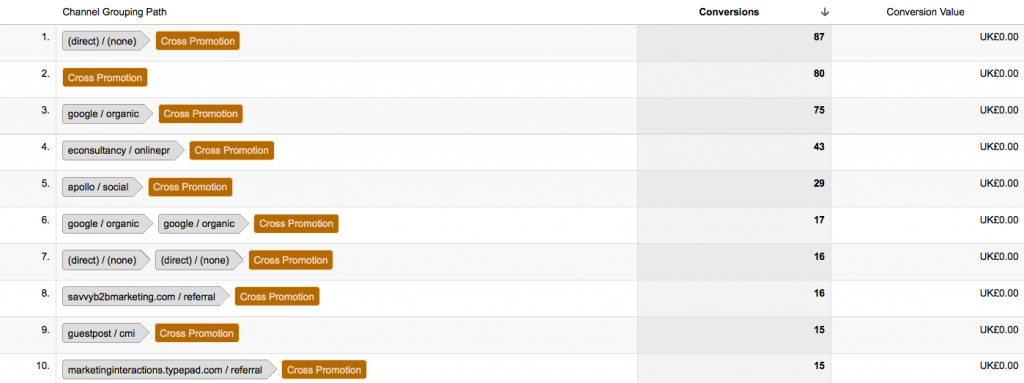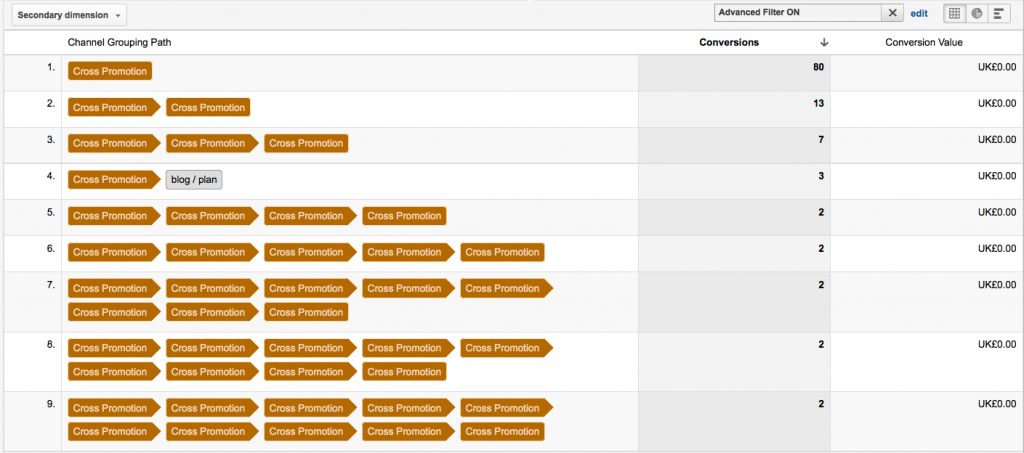The Content Marketing Mickle Series #1
There’s a saying in Scotland (where I’m from) that “many a mickle makes a muckle”.
It’s really just a cooler, alliterative way of saying lots of small things turn into something big.
It’s fair to say that most B2B marketers (and I’m no exception) like to work on the biggest campaigns with the widest impacts. But it’s just as fair to say that the people who truly succeed – whether content marketers or Olympic champions – are the ones who milk every possible advantage until that elusive muckle appears.
It’s realistic to improve 100 things by 1%: it’s unrealistic to improve one thing by 100%.
Cross Promotion
We love cross promotion because it’s brimming with mickles. We link between our own content and (sometimes) strike deals with clients, partners and friends to do the same.
Yet we often see content (videos, ebooks, white papers) hitting the market that don’t reference any other content. This is a mistake: something my granny would describe as a mickle left on the table. She’d be furious at the wasted opportunity to:
Work people down (or up) your sales funnel
Expand their understanding of your company and offer
Cement your reputation as a purveyor of fine content
Understand content performance outside your own site
The first points are obvious (though usually overlooked for reasons I’ll explain later) but the last point is very important but little understood.
Most analytics set-ups will tell you what happens to content on your site. But does your content have a life outside of your site? Do prospects email it one another? Does it actually bring traffic and conversions to your site? With a little bit of smart thinking you can start to get a real handle on whether your message has wings.
Google Multi-Channel Funnels
Using Google’s Multi-Channel Funnels, we can see the role cross-promotion plays in future conversions. And, crucially, we can see how many future marketing prospects arrived at our site for the first time ever as a result of cross-promotion.
Do these two mickles add up to one big conversion muckle? You bet they do.
In the last 12 months cross promotion between our content has been involved in the conversion path of almost one in four conversions. Usually, that means a prospect comes to our site, downloads some content and then links through to download another. Do click the images if you’d like a clearer view.
But that’s only the beginning. If I ask the report to only show cross promotion as the first step of a conversion path then you can see the prospects that only arrived after they read our stuff. The content came before the site visit. This content mickle alone is worth an extra 140 prospects a year.
Nobody, and I mean nobody, can tell me this isn’t a major sign of content marketing impact.
Mickles on the Table
So why are mickles, like cross promotion, lost in the content production process? It happens because:
Creating great content is hard and corners are cut as fatigue kicks in
Content lifecycles are seen in weeks instead of years
Nobody understood their value in the first place
Point content still dominates library content and that’s a mistake
Content production has no central engine to bring it together
Measurement is still under-employed
How It’s Done
If you want to use Google Multi-Channel Funnels to measure your cross promotion then you need to make sure you are using:
1.Tags: The first thing we need to do is tag the links back to our site so Google Analytics understands where it comes from. The following link tag gives all the information we need to track it’s source, media and campaign:
2.Multi-Channel Funnels: We can then use these tags to create custom channel grouping path in the Top Conversion Path tabs.
In this case we simply used our tags to identify our cross promotion traffic and then set up a rule to make it work. It’s simple but hugely effective.
Whoops! Almost forgot: Download this ebook. And all the others you find in it.
Enjoyed this article?
Take part in the discussion












Comments
Tim Aldiss March 22nd, 2013
Don’t forget to use a hash tag when adding your tracking parameters instead of a question mark so that your link still passes that all important link equity
Jacqueline June 28th, 2015
Hi my name is Jacqueline and I just wanted to drop you a quick note here instead of calling you. I discovered your B2B Content Marketing Cross Promotion | Velocity Partners page and noticed you could have a lot more visitors. I have found that the key to running a successful website is making sure the visitors you are getting are interested in your subject matter. There is a company that you can get targeted traffic from and they let you try their service for free for 7 days. I managed to get over 300 targeted visitors to day to my website. Check it out here: http://innovad.ws/2dttq